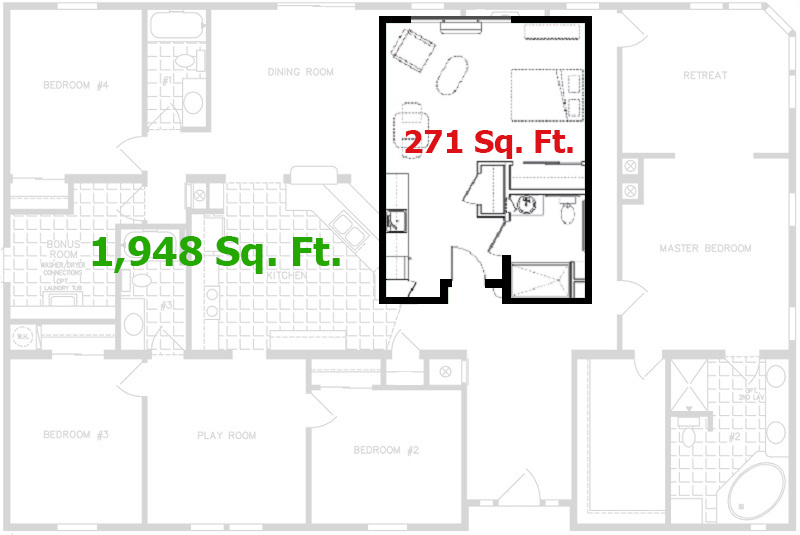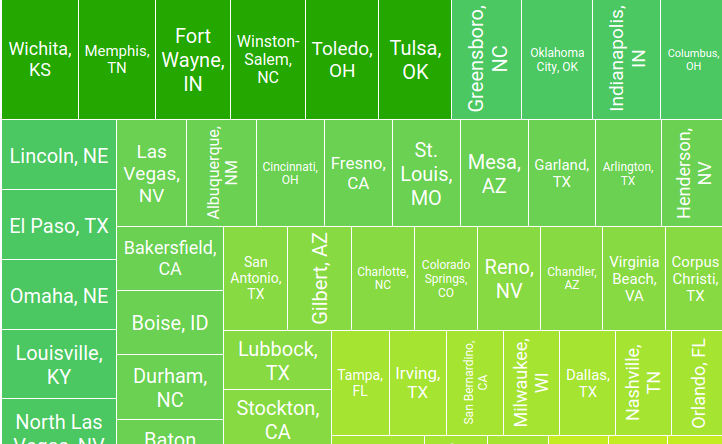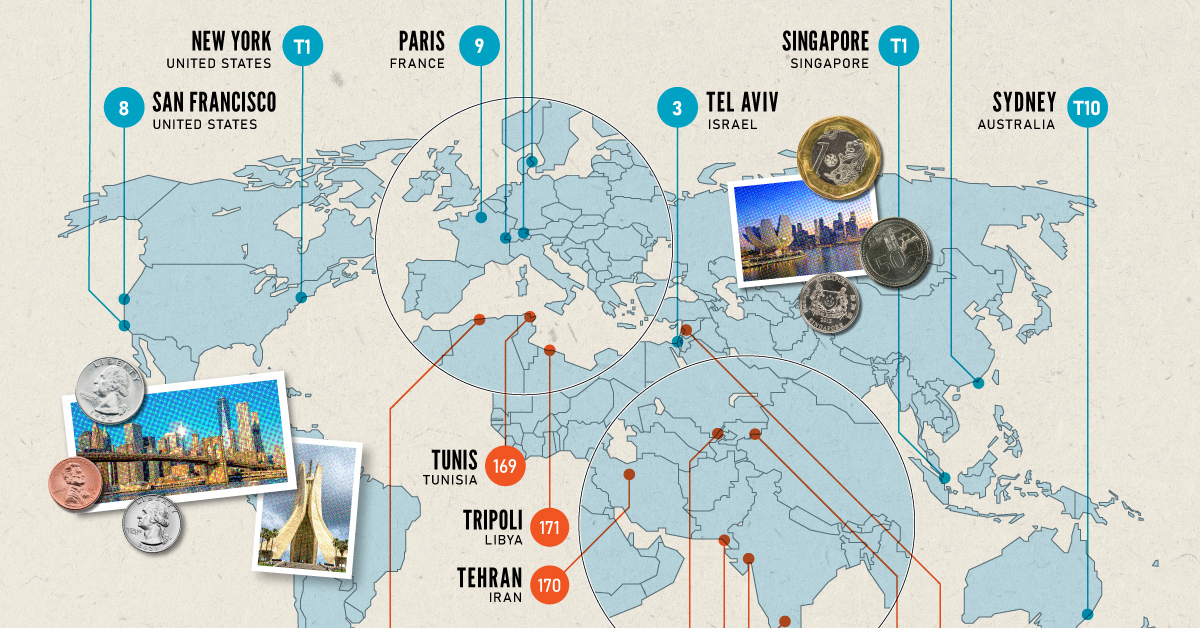With rental prices across the country continuing to rise from this demand, there is one question on the minds of many Americans: how and where can dollars spent on housing be stretched the furthest? Housing market bloggers RentCafe have taken both of these key variables into account in the graphic below, which compares the square footage of an apartment with a fixed rent of $1,500 in the top 100 most populous U.S. metro areas.
Finding The Right Balance
Data like this helps to answer one of the most pressing problems that a prospective renter may have, which is finding the right balance in the trade-off between cost and size. Cities like Cincinnati, Las Vegas, and St. Louis offer a benchmark for the American rental prices, as they have an average dollar-to-space ratio of 1:1. This kind of value can’t be found in most cities on the list, however. And in cities like San Francisco, Boston, and New York, the ratios get really out of whack. In Manhattan, $1,500 gets you just 271 square feet of space, which is the equivalent of $5.53 per square foot.
Space: The Rental Frontier
The disparity between these spatial arrangements is made clear in the graphic below. A fixed $1,500 budget would allow a renter to live in nearly 2,000 square feet of space in Wichita, KS, compared to the aforementioned “closet” in Manhattan:
Adjusting For Income
Not all renters’ budgets will be fixed at $1,500 per month, of course. To address the wide variation in income and percentage of income that individual renters will be able to devote to their housing expenses, this calculator shows the equivalent square footage for any given monthly rent in a selection of the cities in the main graphic above.
on Cities become “expensive” due to a variety of factors such as high demand for housing, a concentration of high-paying businesses and industries, and a high standard of living. Additionally, factors such as taxes, transportation costs, and availability of goods and services can also contribute to the overall cost of living in global cities. The infographic above uses data from EIU to rank the world most and least expensive cities to live in. To make the list, the EIU examines 400+ prices for over 200 products and services in 172 cities, surveying a variety of businesses to track price fluctuations over the last year.
Inflation + Strong Currency = Expensive Cities
If you live in a city where many residents find it challenging to put a roof over their heads, food on their plates, and make ends meet, you live in an expensive city. But if this inflation is compounded with a strong national currency, you may live in one of the world’s most expensive cities. Singapore and New York City tied for the first rank amongst the world’s most expensive cities in 2022, pushing Israel’s Tel Aviv from the first place in 2021 to the third place in 2022. Both these cities had high inflation and a strong currency. Surprisingly, this is the Big Apple’s first time atop the ranking. The city with one of the most expensive real estate markets worldwide, Hong Kong ranked fourth in this list, followed by Los Angeles, which moved up from its ninth rank in 2021.
Poor Economies = Cheaper Cities
Asia continues to dominate the list of the world’s least expensive cities, followed by parts of North Africa and the Middle East. Though affordability sounds good at face value, sitting at the bottom of the ranking isn’t necessarily a coveted position. While the cost of living in some of the cities in these nations is low, it comes at the price of a weak currency, poor economy, and, in many cases, political and economic turmoil. The decade-long conflict in Syria weakened the Syrian pound, led to a spiraling inflation and fuel shortages, and further collapsed its economy. It’s no surprise that its capital city of Damascus has maintained its position as the world’s cheapest city. Tripoli and Tehran, the capitals of Libya and Iran, respectively, follow next on this list, reflecting their weakened economies. Meanwhile, seven cities in Asia with the common denominator of high-income inequality and low wages dominate the list of the world’s cheapest cities. These include three Indian cities, Tashkent in Uzbekistan, Almaty in Kazakhstan, Pakistan’s most populous city of Karachi, and Sri Lankan capital–Colombo.
















